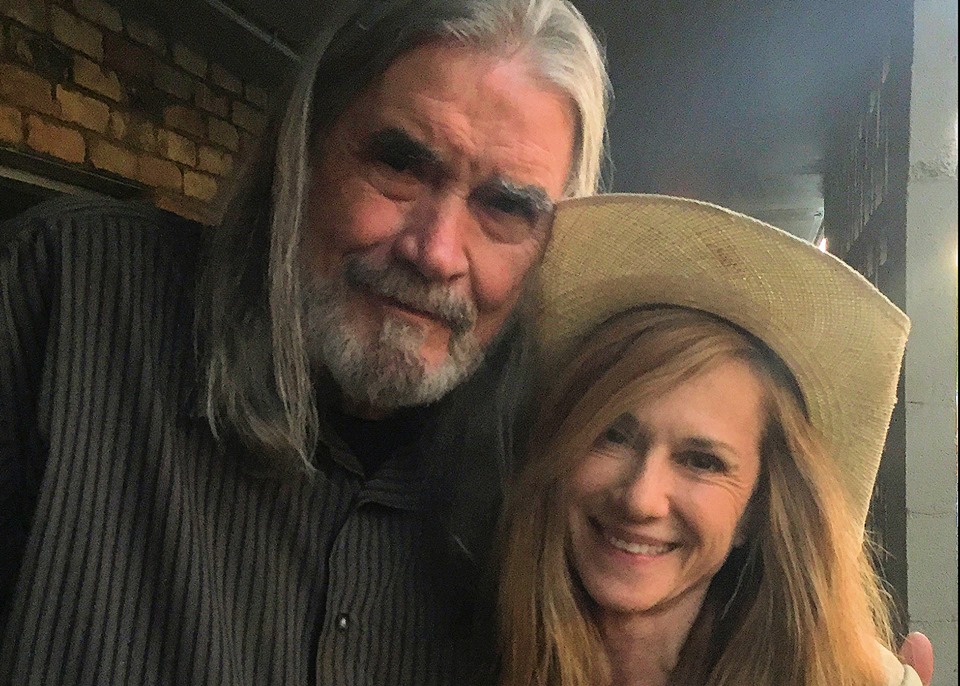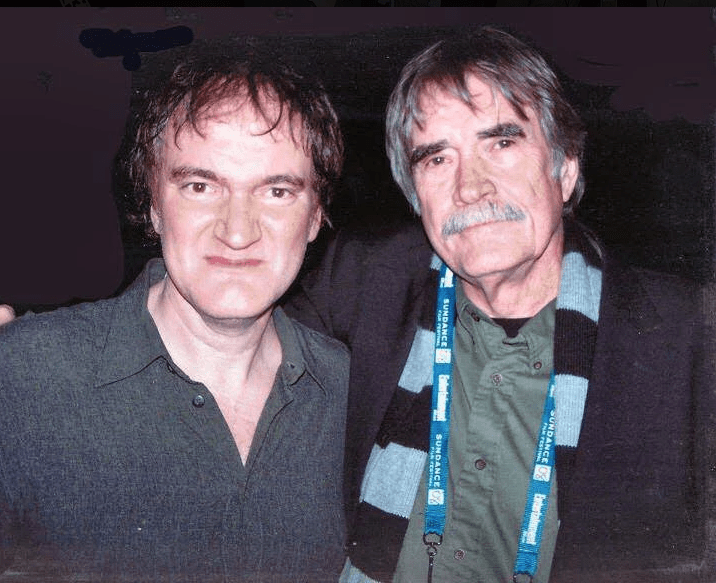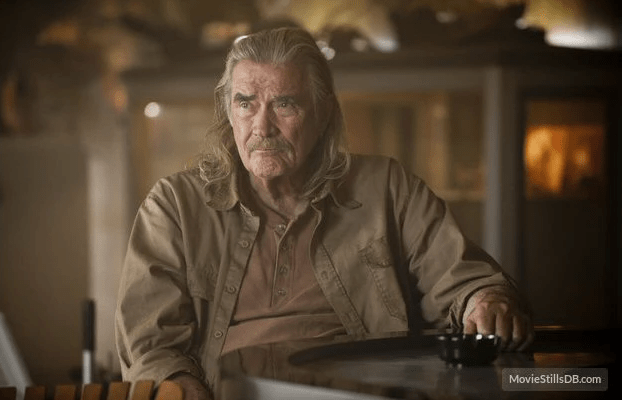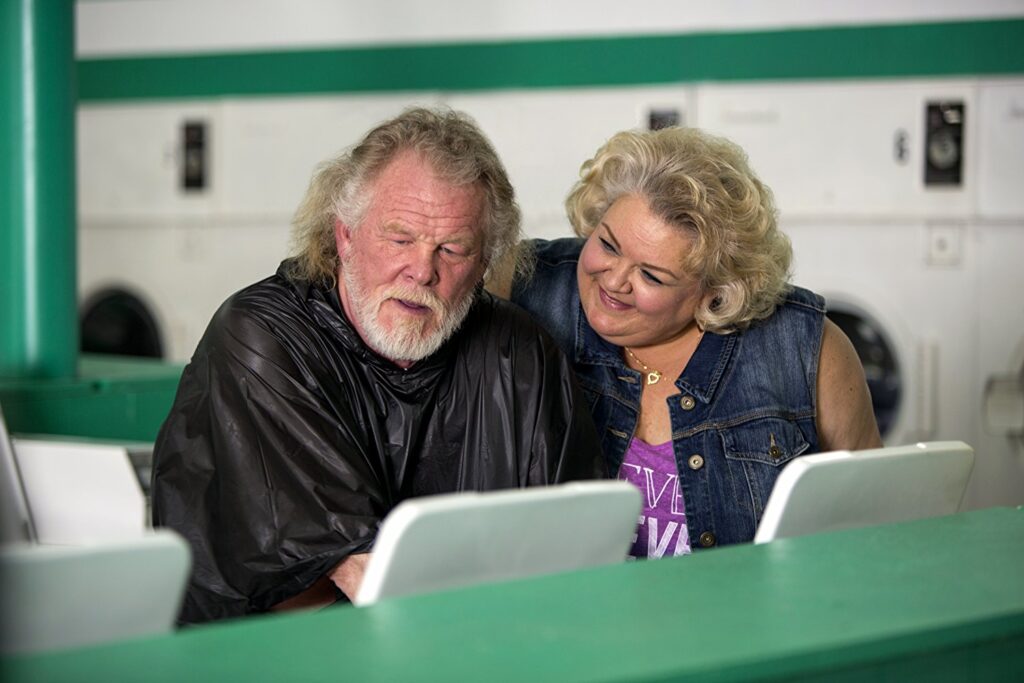Arts & Entertainment
Top Stories of 2017: Johnny McPhail: From the Cotton Patch to "True Detective"


Oxford actor Johnny McPhail had a featured role in the 2008 Sundance Film Festival hit “Ballast.”
Scott Fitzgerald once famously said, “There are no second acts in American lives.” But he may have had to re-think that axiom if he’d ever met Johnny McPhail.
Not only has McPhail had a second act in life, he took the phrase quite literally. A native of Bruce and longtime resident of Oxford, McPhail reinvented himself late in life as a character actor on screen and television. He has appeared in wide theatrical release films, such as “American Ultra” and “Free State of Jones,” as well as a multitude of acclaimed independent films like 2008’s “Ballast,” which won two awards at the Sundance Film Festival. But his most widely seen role may have been as the stoic sharpshooter Robert Doumain in HBO’s runaway hit “True Detective.”
HottyToddy.com caught up with Johnny McPhail for an in-depth interview.
HottyToddy.com: Let’s start at the beginning. Who was Johnny McPhail before he was an actor?
Johnny McPhail: We grew up on a small farm outside of Bruce. I mean very small. It was before all the modern conveniences and automatic machinery. We chopped our corn, milked our cows and picked all our cotton by hand. It was a very isolated life. My best friends were my cousins, and I only really saw them in school.
HT: Do you feel that background gives your performances as an actor a rustic authenticity?
JM: Oh, yeah. The older you get, the better actor you should become because you have so much life experience to draw from. But my acting method is very, very simple. If you believe it, the audience will believe it. It’s basically about not acting. Don’t let them catch you acting. When I’m in the moment or even when I’m rehearsing, I visually see everything in the scene in my mind’s eye.
HT: When you were just a kid on a farm, how did you experience movies?
JM: After we got done picking cotton, we’d take it to the gin in Bruce and then go to the picture show on Saturday nights. We’d go see all the old movie stars in black and white movies. I always loved movies.
Additional reading: Johnny McPhail appears in new Greg Allman video for “Song For Adam.”
HT: Did you ever think, when you were in a field picking cotton, that one day you would be on that screen?
JM: Never! I never dreamed of meeting a movie star. That was so far outside anything we knew. I never would’ve thought that could happen to me. We didn’t even have plays in school. I was very naive.
HT: Where did you go from the farm?
JM: Well, I’ve re-invented myself all my life. I’ve cut timber, worked for a telephone company and milked cows for a living. For a while, I had a job as a bouncer. A guy who trained me was an old boxer, and he taught me, “The main thing in a fight is, don’t get hit. ‘Cause I don’t care how big you are, it hurts when you get hit.” I always remembered that. Just don’t get hit.

Johnny McPhail had a crucial role in “Strange Weather,” starring Holly Hunter.
HT: That’s probably not bad advice for an acting career, either. That, and learning how to take the hits when they come.
JM: It happens differently for everybody. If I’ve learned one thing, it’s that meeting one person can change your life forever. But everyone is different. I don’t care how many acting classes you take, no two people are the same. Everybody arrives by a different path. And everyone you help will push you forward. It’s not about pushing somebody else down to get ahead. That never works. I’m not the best actor in the world, but nobody can play Johnny McPhail like I can. People didn’t go to movies to see John Wayne transform into a completely different person. They went to movies to see John Wayne play John Wayne. I got a unique look, and that really helps. Casting directors told me, “We don’t get too many older guys with long hair. We don’t get too many older guys with hair at all.”
HT: In the 90s, you were involved in a number of projects adapted from stories by one of Oxford’s favorite native sons, writer Larry Brown. How did that come about?
JM: Oh, me and Larry were best of friends. I did two Larry Brown plays here in Oxford. We did a performance of 13 scenes from “Joe” at the Hoka Theater. Then the University of Mississippi produced an adaptation of “Dirty Work.” I got a lot of acclaim locally from playing the nasty character, Wade, in “Joe.” That’s what kind of got me going, thinking I would continue pursuing acting. Later on, Arliss Howard combined a number of Larry’s stories into a movie called “Big Bad Love,” which his wife, Debra Winger, co-starred with him in. I got to be in that movie and got to become really good friends with them. There’s a lot of people in the movie industry I can say, “I know them.” But Arliss and Debra are the two people I can really say are true friends.
HT: How would you describe Larry Brown?
JM: All he thought about was writing. We would ride around at night sometimes. Everything he wrote, he could point at a tree or under a bridge or some place as you’re going down the road, and tell you that’s where this event or that scene from one of his stories happened. I think that’s what attributes to him being a good writer. He wrote so visually. I remember sitting out here in the driveway after he brought me home one day, and Larry told me, “I’m gonna be famous some day, but it’ll probably be after I’m dead.”
HT: Let’s talk about “Ballast,” the acclaimed film that was your first big break. It was a minimalist film set in the Delta that explores the aftermath of a suicide victim, who leaves behind his identical twin brother, a widow and a son.
JM: Well, how that happened was Nina Parikh from the Mississippi Film Commission called me and said, “Hey, there’s a really good part you’d be good for in this movie, ‘Ballast,’ that’s filming in the state.’ I didn’t want to drive to Jackson, so I actually turned it down at first! But Nina called me back and insisted I go down to audition with the director, Lance Hammer. It was a different audition than any I’ve ever had. Lance had a big list of 35 questions he was asking, such as “Do you like animals?” and that was the audition. He asked the first question, and I just started talking and talking away. When finally I stopped, he looked down at his list and said, “Well … you already answered all the rest of my questions, so thanks for coming.” They gave me the part.
The shoot was cold and a mess, and I didn’t know if the movie would ever amount to anything. Lance was really into studying spirituality. His mother had an identical twin, and it got him wondering about the concept of identity. Do identical twins share the same soul? When one dies, does the other one live or partially die or what happens? That’s where that story came from.

McPhail met director Quentin Tarantino at the 2008 Sundance Film Festival. Tarantino later cast McPhail in “Django Unchained,” but McPhail’s role was eliminated as the film began running over budget.
HT: Then it premiered at Sundance and won Best Director and Best Cinematography. You were there for that. What was it like?
JM: Oh, man, it was screening every single day. I didn’t know at the time, but Quentin Tarantino was the head juror. We’re doing Q&A’s at the festival seven days in a row, and I look down and there’s Quentin Tarantino in the front row. After the awards ceremony, Tarantino was being interviewed by somebody, and they said, “Hey, here’s Johnny McPhail from ‘Ballast’!” Next thing I know, Quentin grabbed me and pulled me over to him and said I had a great face, and he’s gonna put me in all these movies. That’s quite a leap from that cotton patch, ain’t it?
HT: Usually, a Sundance win propels a film career into the stratosphere. But after “Ballast,” Lance Hammer fell off the map. An AV Club article came out early this year wondering where he went. You worked with him. Do you have any insight on why he appears to have stopped making films?
JM: Well, he had so many things happen to him in his personal life. Maybe that gave him writer’s block. But he also said he’d spent 18 years of his life working toward telling that one story in “Ballast.” Maybe that exhausted him creatively. I don’t know. I have heard through the grapevine he’s going to try to start writing again.
HT: And as far as Quentin Tarantino goes, he actually did cast you in “Django Unchained,” right?
JM: Yes. But it ran so far over budget they had to start cutting a lot of scenes in production, including the scene I would’ve been in.

In one of his highest-profile roles, McPhail played the enigmatic sharpshooter Robert Doumain in season 1 of HBO’s “True Detective.”
HT: As long as we’re running down your greatest hits, tell me about “True Detective.”
JM: That was a huge production. It was shot down in Louisiana. They’d cleared off acres and acres of land on this bayou just for the crew to park! The character I played owned a little dive bar. They converted an old bait shop into this bar for the show. My first day, I walked into the makeup trailer and sat down in front of these mirrors. In the reflection behind me, I saw this feller sitting there with his boy sitting in his lap. He leaned forward and put his hand out and said, “Hey, Johnny, good to see you. I’m Matthew McConaughey. I’m going to be acting with you.” Boy, you talk about getting a jolt!
He was totally a method actor. He stayed in character continually. In between scenes, he would go study the book. He knew his lines and everybody else’s. Never seen anybody smart as him. Before we shot our scene, he would lean forward, come out of character, squeeze my shoulder, talk to me a bit. He’d ask, “Are you from Mississippi? Are your grandparents from up there? Yeah, I’m from Texas myself…” Like he wanted to get to know you. Just before rolling, he’d say, “Okay, Johnny. This is our bar. We’re going to take as long as we want to do this scene.” Then he’d nod at the director, who would call action.
HT: That show was a cultural phenomenon. For a while it seemed like everybody was wondering who the “Yellow King” was or whether McConaughey’s character was the bad guy all along. People cite Robert W. Chambers’ writing as an influence on the show, because of the “King in Yellow” references, but the show’s creator and showrunner, Nick Pizzolatto, said it was actually much more influenced by Oxford’s own William Faulkner. What impression did you get of Nick Pizzolatto?
JM: You know how on some movies set in the South, it seems like everybody’s trying to do kind of the same Southern accent, and they’re all getting it wrong? Well, Nick got up one day on a platform with a megaphone and made a big speech to the cast. He said, “I’m from New Orleans. I grew up here. But I got a perfect mid-American accent. On my street, two houses down, I might hear a Boston accent. I could go two streets over and hear a New Jersey accent or a Minnesota accent or an Indian accent. There are all kinds of people that live in New Orleans from all over. I don’t want anybody doing a fake accent on this show! Talk how you talk!” That was good for me, because I can’t talk no other way.
HT: You reunited with Matthew McConaughey on the movie, “Free State of Jones.” Did he remember you?
JM: Well, the first day we were shooting, I saw him all day long but didn’t approach him. I didn’t want to disturb him on the set. Finally, when we got done with the last shot for the day, he jumped up to the porch I was on and said, “Johnny! The bar owner! How are you?”
HT: “Free State of Jones” is based on the true story of an armed revolt during the Civil War in which Jones County, Mississippi, declared itself an independent state and resisted the Confederacy. Are you proud that you got to be part of a movie that brings an important piece of Mississippi history off the shelf and into the spotlight?
JM: Oh, definitely! It’s a great story. I just wish the movie would’ve been a bigger hit so more people could’ve seen it. But that’s how it goes sometimes. All the critics said where they went wrong was, it had two timelines. Some court case stuff much later on and the Civil War timeline. The real story was in the Civil War timeline. If they’d stuck to that, it might’ve been a bigger hit. Going back and forth was confusing as to how they related to each other.
HT: You have a large family and didn’t really throw yourself fully into acting until around age 50. That’s a pretty drastic step. How did your family react to it?

Johnny’s wife, Susan McPhail, has also landed roles in major movies. Here, she’s shown with Nick Nolte in the 2015 film, “A Walk in the Woods.”
JM: I’m married to Susan McPhail, who’s the best wife in the world, and has her own acting career. She’s 100 percent supportive of me, and I love her to death. My two oldest children were already grown by the time I really got started in acting. For a good number of years, Susan was pursuing a career in special education, and my job had become managing rental properties. It gave me the freedom to be at home a lot and spend a lot of time with Ashley, my youngest daughter, who is autistic. If I hadn’t had the time I could spend working with her on reading, writing and speech, she may not be able to communicate like she does now. People think Susan studied special education because of Ashley’s autism, but that’s actually just a coincidence. We learned a lot about how the mind of someone with autism works. A lot of school districts used to think you can treat autism with a paddle, and we’ve had legal battles over that sort of thing. But students with autism have different education needs than other students. Schools are getting better and better about understanding that.
Additional reading: Susan McPhail appears in Nick Nolte film, “A Walk in the Woods.”
Ashley runs lines with me to help me rehearse for auditions. She has actually been in three movies with me herself. My second-youngest daughter, Courtney, is a graphic designer. She designs all my t-shirts and other things for me. But all my children have been really supportive of us and love us unconditionally. It makes it a lot easier to do anything when your family’s behind you.

Johnny McPhail on the set of the upcoming Randall Terry film, “Time Boys.”
HT: From your early years watching movies at the picture shows in Bruce to now, what has changed about the medium of motion pictures?
JM: Everything! It’s all digital now. It used to be that you had to move out to L.A. to try to make it in movies. Now you can audition for anything from anywhere by recording auditions with a digital camera and uploading a file. They shoot the movies digitally. They screen movies digitally. You watch movies at home digitally and send digital files halfway around the world in minutes.
The other thing that’s changed is, movies aren’t just in Hollywood anymore. Most of the TV shows and movies are made in Louisiana and Georgia now. Hollywood has come to the South. And where Susan and I are located just happens to be roughly equidistant from either Shreveport or Atlanta. It used to be that they were reluctant to cast anyone who wasn’t already in Louisiana or Georgia because they didn’t think you were ‘local.’ You’d have to lie to casting directors and say you lived in the state. Susan and I started working on educating casting directors not to overlook people in Mississippi, because you can really think of them as flexible to work in either state. After a while, they started to get it, and now you don’t have to lie about what state you live in. We’re really at the top of a geographical triangle for movies up here in Oxford.
HT: What’s next for Johnny McPhail?
JM: I don’t know for sure. I’m on standby about a Netflix project called “Highwaymen,” starring Kevin Costner and Woody Harrelson. It’s about the lawmen who were hunting Bonnie and Clyde. I may get it or may not. You never know the future. Some days you think you’re at the end of your run and your phone will never ring again. Then the next day, you’ll get a call from a casting director on a big project telling you, “Hey, Johnny, come on down! And bring the hair!”
D.L. Perea is an Oxford-based filmmaker, photographer, writer and also serves as senior media producer for PMQ Pizza Magazine.

















Kingroot Apk
December 20, 2017 at 7:46 am
This is one of the best articles I have come across. Keep up the good work.